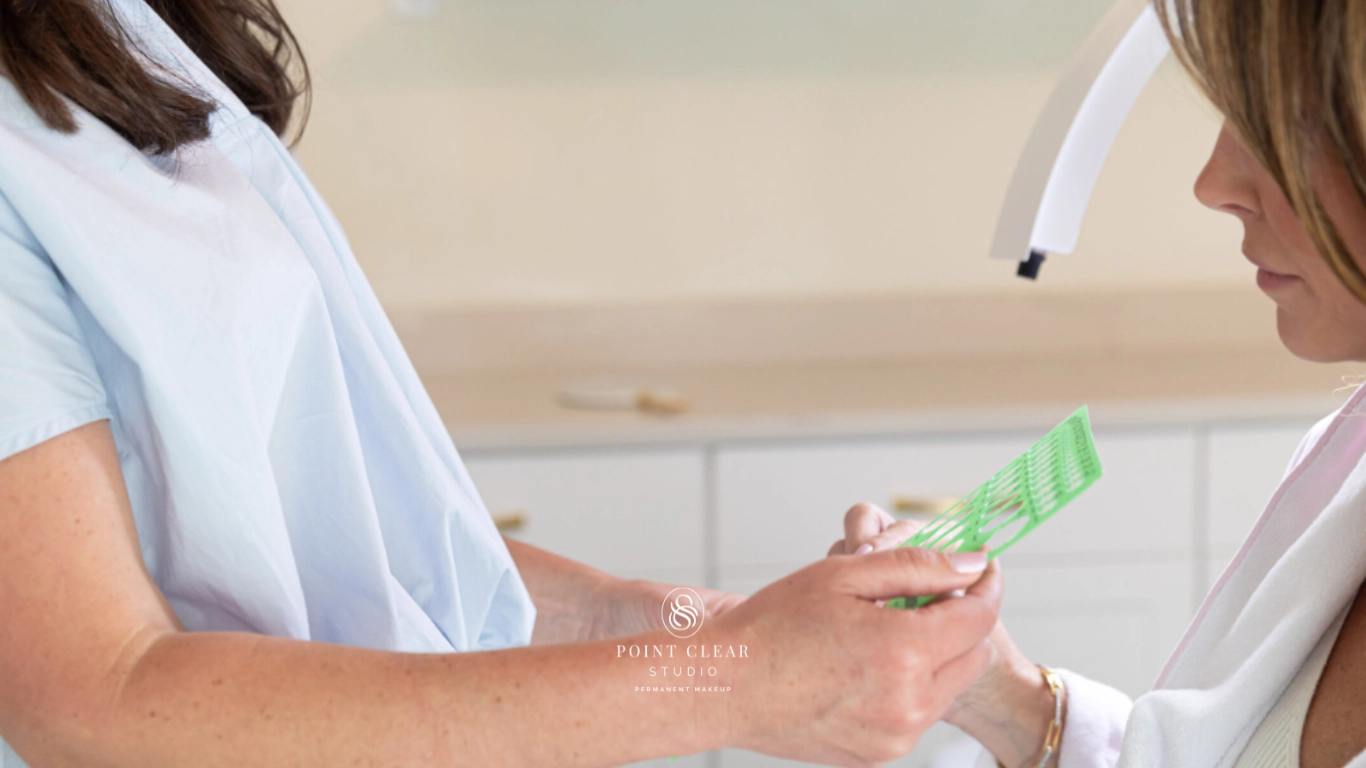
For many breast cancer survivors or individuals undergoing gender affirmation surgery, areola tattooing is the final touch that completes the journey of breast reconstruction. One of the most common questions we hear is: When is the right time to have areola micropigmentation after surgery?
At Point Clear Studio, we understand how important timing is for both the safety and success of your results. In this blog, we’ll explain the ideal timeframe, what factors affect healing, and how to prepare for your areola restoration treatment.
Your body needs time to heal fully after any type of breast surgery. While it can be exciting to finish your reconstruction process as soon as possible, waiting until your skin has healed properly is critical to ensure the best results and reduce any risk of complications.
Tattooing on skin that is still sensitive, swollen, or scarred too recently can lead to:
Most medical professionals and micropigmentation specialists recommend waiting at least 6 months after your final breast surgery before having areola tattooing done. This allows:
This timeline ensures your skin is strong enough to handle the micropigmentation process and that we can design your tattoo with the most accurate positioning and symmetry.
While 6 months is the general guideline, every client is unique. Here are factors that can affect your readiness:
Whether you've had a mastectomy, lumpectomy, or breast reduction surgery, your individual healing process may vary. Reconstructed breasts, especially those with implants or tissue expanders, may require additional healing time.
Fresh scars are more sensitive and can be unpredictable. We look for scars that are flat, pale, and no longer raised or red—signs that healing is complete.
If you have any underlying medical conditions (such as diabetes or autoimmune disorders) or experienced complications post-surgery, your doctor may recommend a longer healing period.
Even if your body is physically healed, it’s important that you feel emotionally ready. Some clients choose to wait longer for personal or emotional reasons—and that’s perfectly okay.
Before scheduling your areola tattooing, we always begin with a thorough consultation. This is your opportunity to:
We’ll assess your skin’s readiness and, if needed, work with your medical team to ensure it’s safe to proceed.
Radiation can add another layer of complexity to your healing process. The skin may be more fragile, sensitive, or prone to discoloration. If you’ve undergone radiation therapy, it’s often recommended to wait at least 6–12 months post-treatment before considering areola micropigmentation.
We’ll take special care during your consultation to assess any additional healing needs.
Once your skin is ready, preparing for areola micropigmentation is straightforward:
At Point Clear Studio, we understand that areola tattooing is a deeply personal and emotional experience. Our mission is to provide not only exceptional technical results but also compassionate, individualized care.
We use advanced 2D and 3D shading techniques to create natural, realistic results and work closely with you to ensure your vision is brought to life in a supportive, serene environment.
If you feel you’re ready for areola tattooing—or if you’re still unsure about the timing—we’re here to guide you every step of the way. Contact Point Clear Studio today to schedule your private consultation and take the next step toward restoring your confidence and sense of wholeness.
Tattooing on skin that hasn’t healed fully can lead to poor pigment retention, discomfort, and possible complications. It’s important to wait until your skin is ready to achieve the best results.
Yes, but the scars should be fully healed—flat, soft, and light in color. We assess scar maturity during your consultation.
Yes, your surgeon or medical team can provide valuable insight into your healing progress. We often collaborate with surgeons to ensure the best timing for your treatment.
If you’re only enhancing existing tissue (not reconstructing), healing is typically faster, but we still recommend waiting until scars have fully healed—usually around 3–6 months.